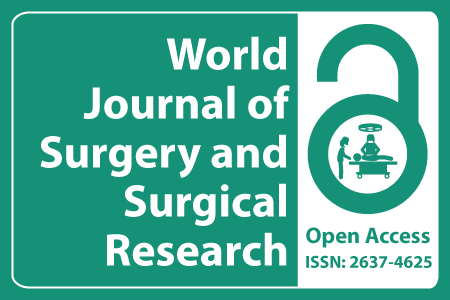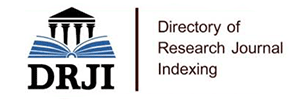
Journal Basic Info
- Impact Factor: 1.989**
- H-Index: 6
- ISSN: 2637-4625
- DOI: 10.25107/2637-4625
Major Scope
- Anesthesiology
- Urological Surgery
- Orthopaedic Surgery
- Trauma Surgery
- Breast Surgery
- Surgery & Surgical Research
- Spine Surgery
- Colorectal Surgery
Abstract
Citation: World J Surg Surg Res. 2020;3(1):1270.DOI: 10.25107/2637-4625.1270
Clinical Features of Stercoral Perforation of Colon Compared with Perforated Colon Diverticulum: A Single Center Experience
Takahiro Murakami*, Morihiro Katsura, Masafumi Ie and Takashi Kato
Department of Surgery, Okinawa Chubu Hospital, Japan
*Correspondance to: Takahiro Murakami
PDF Full Text Research Article | Open Access
Abstract:
Aims: Stercoral perforation is a relatively rare life-threatening condition. The aim of this study
was to investigate and compare the clinical characteristics and outcomes of patients with stercoral
colonic perforation and patients with perforated colonic diverticulum.
Methods and Results: This retrospective cohort study analyzed data via chart reviews from
patients who received treatment at our institution between 1989 and 2018. Patients were divided
into the stercoral colon perforation group (stercoral, 20 patients, 13.5%) and perforated colonic
diverticulum group (diverticulum group, 40 patients, 27%). There were no significant differences
in patient background information between the groups. Patients in both groups had a high rate of
chronic constipation (80% vs. 53%). The final diagnosis was confirmed by CT scan in over 80% of
all patients and the most common site of perforation was the sigmoid colon in both groups (80%
vs. 90%, respectively).
The most performed surgical procedure in both groups was the Hartmann procedure, and the
implementation of planned second-stage surgery was significantly higher in the stercoral group
(40% vs. 13%, respectively, p=0.04) than the diverticulum group. Although no significant differences
in the postoperative mortality rates (20% vs. 15% respectively, p=0.9), the duration of hospital stay
was significantly longer in the stercoral group (60.2 vs. 36.6 days, respectively, p<0.05).
Conclusion: In the increasingly aging population, stercoral perforation should be suspected in
elderly and chronically constipated patients with unexplained abdominal pain, although stercoral
colonic perforation and perforated colonic diverticulum showed no significant differences in
clinical characteristics or treatment outcomes in our study. Prompt diagnosis and optimal surgical
intervention should be warranted to overcome this perilous pathology.
Keywords:
Stercoral perforation; Perforated colonic diverticulum; Hartman’s procedure; Open abdominal management; Mortality
Cite the Article:
Murakami T, Katsura M, Ie M, Kato T. Clinical Features of Stercoral Perforation of Colon Compared with Perforated Colon Diverticulum: A Single Center Experience. World J Surg Surgical Res. 2020; 3: 1270..













